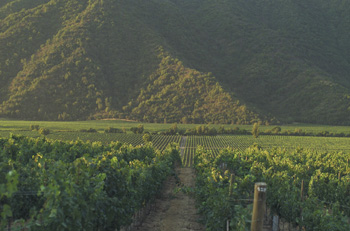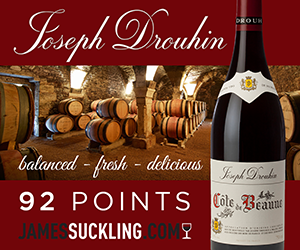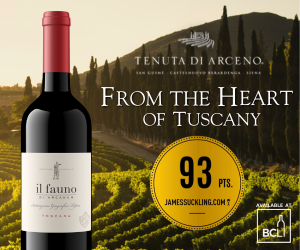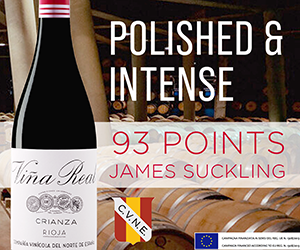Mixing Chile and France in a wine column may seem odd, but there is a meaningful wine connection between the countries and it dates back to the mid-1800s, just after independence had arrived in Chile.
With sovereignty came the need for Chile to set up its export markets, and as the country's aristocracy moved about Europe, and particularly France, the notion of creating a chateau or wine estate became an obsession with some Chilean businessmen.
After 300 years of growing the local pais (mission grape), which makes the most ordinary of wine, the returning travellers brought back the finest vinifera grapes, which are responsible for Europe's fine wine reputation.
From Bordeaux came cabernet sauvignon, merlot, malbec and cabernet franc; chardonnay and pinot noir from Burgundy and riesling from Germany. The wealthiest estate owners even imported winemakers to transform the new grapes into wine.
Not all that long after Chile began its wine revolution, phylloxera (a tiny aphid that chews the new root tips of vines, killing the plants over time) began to destroy most of Europe's vineyards and that's where the Chile/France loop was closed.
As the European wine industry began its fight against phylloxera, it looked for young, healthy plants for grafting on to phylloxera-resistant rootstocks. New vine cuttings were shipped back to Europe from Chile and the French wine industry, along with the rest of the world's infected vineyards, were saved by plant material they had originally shipped to South America.
Today, Chile is the only country where pure, un-grafted European vines still flourish in commercial quantities. That's because the slow-moving phylloxera appears to be unable to penetrate Chile's great natural barriers of sand to the north, ice to the south, water to the west and mountains to the east.
Our tasting looks at two sets of wines: three from Vina Caliterra, a Chilean winery owned jointly by the families of American Robert Mondavi and Chilean Eduardo Chadwick, and three varietal labels from Pierre Sparr in Alsace -- all linked by a common vine ancestry.
The Caliterra Chardonnay 2001 was partly barrel-fermented and given a bit of oak aging to round out the mouth feel -- not a bad deal for a wine at this price. Look for a buttery, pear, green apple nose with a touch of vanilla and floral notes. It is dry, round and light with pear, mineral, apple flavours and a clean finish. Simple yet balanced. All you could ask for at this price.
Just over half of the fruit in the Caliterra Merlot 2000 is wood aged in French and American oak for six months. Look for spicy, smoky prune fruit aromas with streaks of tobacco in what is a soft and seductive red. Dried cherry flavours fade into a mouth-filling smoky, vanilla mocha chocolate finish, which belies its price. Fine varietal definition.
The hot red grape in North America is syrah and the Caliterra Syrah 2000 fits the bill. Look for an open earthy nose with blackberry and garrigue notes. It is soft and round on entry with good fruit on the palate and just a hint of dryness in the finish. It's a gutsy little red for grill meats at a fair price.
What's not to like about Pierre Sparr wines? Fresh, flavourful, intense and affordable, they are simply well made wines that really shine in the summer.
First up is the Pierre Sparr Pinot Blanc Reserve 2001. This is a solid every-day style white that will quench your thirst with a palate of citrus, pear and melon fruit flavours. It's intense, fruity, dry and versatile with food. You could serve it with shellfish, seafood salads, pasta dishes and more.
My favourite this week is the Pierre Sparr Alsace One 2001. This fruit-salad white with its spicy ripe red apple nose and peach/floral highlights is an amazing blend of riesling, pinot blanc, gewürztraminer, muscat and pinot gris. It is extremely attractive on the nose and you will love the lime butter flavours and zippy finish. Scallops or a chicken summer salad would be a fine match here.
The Pierre Sparr Riesling Reserve 2000 is now showing some maturity. It is quite soft on the nose with floral fruit and mineral highlights. The flavour is a mix of apple skin, peach pit and mineral. It's tart but balanced and made for food. Seafood, pork dishes, quiche or onion tart would all be acceptable menu items for this label. Look for the 2001 edition soon.
Sun wine columnist Anthony Gismondi is also co-host of The Best of Food and Wine, which airs at noon each Saturday on CFUN 1410 AM.
WEEKEND WINE TASTING:
Vina Caliterra, Chile and Pierre Sparr, France
Wine: Caliterra Chardonnay 2001, Region del Valle Central
Price: $10.99
UPC: 610444012035
Score: 14/20
Comments: Pear, mineral, apple flavours. The perfect summer sipper.
Wine: Caliterra Merlot 2000, Region del Valle Central
Price: $11.99
UPC: 610444015036
Score: 14/20
Comments: Look for spicy cherry, smoky, seductive red.
Wine: Caliterra Syrah 2000 Region del Valle Central
Price: $11.99
UPC: 7804304105354
Score: 15/20
Comments: A gutsy little red for grill meats at a fair price.
Wine: Pierre Sparr Pinot Blanc Reserve 2001
Price: $16.99
UPC: 3263530020314
Score: 15.5/20
Comments: Spicy aromatic earthy white made for mussels.
Wine: Pierre Sparr Alsace One 2001, Alsace
Price: $18 to $20*
UPC: 3263530020017
Score: 16/20
Comments: Fresh, attractive mineral, green peach fruit.
Wine: Pierre Sparr Riesling Reserve 2000
Price: $19.95
UPC: 7798039590458
Score: 14/20
Comments: Soft, floral, chalky mineral fruit.
*Private wine shops only

 quicksearch
quicksearch






